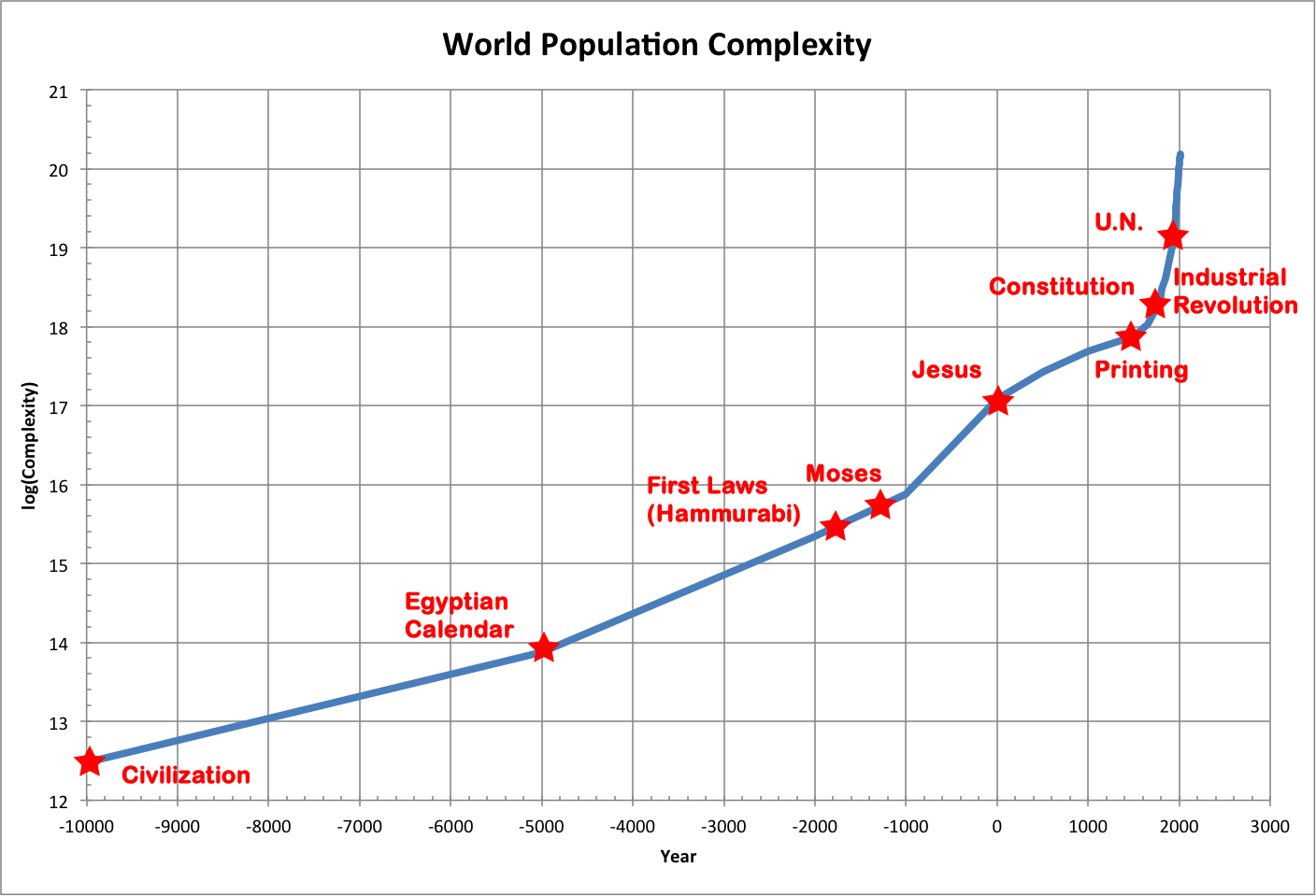
Image Description: Basic complexity of human experience for the entire world population over the years 10000 B.C. to 2013 A.D. "Basic complexity" is the minimum number of descriptions necessary to summarize real and potential experiences of all people in the population at any given point in time. Major events and associated people or things are highlighted around points where the trajectory has changed significantly, suggesting that major changes to interpretation of experience may have occurred at those points.
Where P is population, basic complexity C = 3 * P2, which includes interactions between each person and all people, internal constructs (embodying interpretations of experience), and physical environments. For convenience, the base-10 logarithm of complexity (log C) is shown. Note that if the interaction of environments with each other were included, "total complexity" would be the result, with the addition of another P2.
For a discussion, see "Communicating Complexity" (blog post).
Source of events: The Timetables of History, 4th ed., by Bernard Grun (Simon & Schuster, 2004).
DEFINITIONS
The discussion above and in "Communicating Complexity" more precisely does not include descriptions of internal constructs and environments except as part of the interactions between them and people. If those descriptions are explicitly included, then C = 3 * P2 + 2 * P = P * (3 * P + 2).
More formally, the minimum number of descriptions C needed to describe, at a particular time, the state of a population of people P, their common internal constructs I, and the environments they inhabit E, includes descriptions of:
|
|||
|
|||
|
|||
|
C = P + I + E + P * (P - 1 + I + E)
= P * (P + U + E) + I + E
Where I = E = P, this can be simplified to C = 3 * P 2 + 2 * P
= P * (3 * P + 2).
If interactions between environments are included, then the total number of descriptions D = C + (E2 - E) since the environments are already described.
This reduces to: D = P * (P + I + E) +I + E2 .
Where I = E = P, this simplies to: D = 4 * P2 + P
= P * (4 * P + 1).